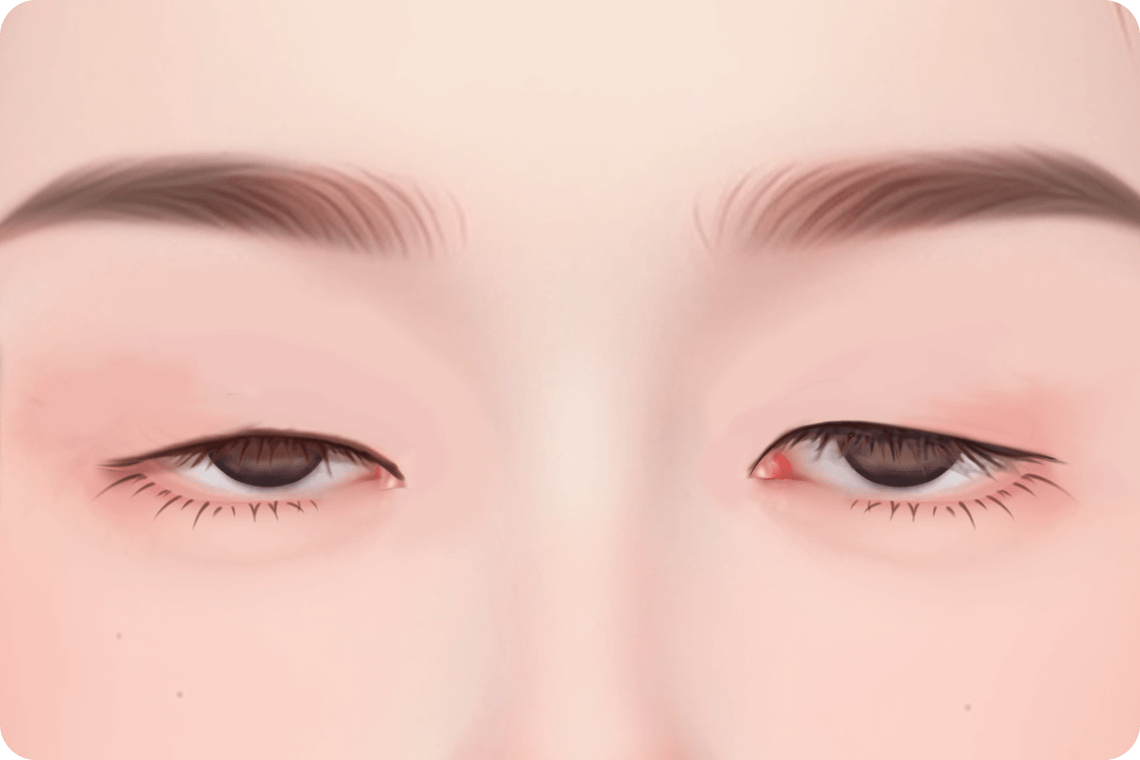What are the best methods for treating drooping upper eyelids?
Generally speaking, there is no such thing as "the best methods to treat drooping upper eyelids." Ptosis refers to the drooping of the upper eyelid, which may be caused by factors such as eye strain, bacterial infection, trauma, aging, or genetics. Upper eyelid ptosis can usually be treated through methods including botulinum toxin type A injections, fractional laser therapy, full-incision double eyelid surgery, frontalis suspension surgery, and levator muscle shortening surgery. It is recommended to visit a reputable hospital and choose an appropriate treatment method under professional medical guidance.
Drooping of the upper eyelid due to excessive eye use, resulting in fatigue of ocular muscles and nerves and weakened muscle contraction, can be improved with adequate rest and botulinum toxin type A injections. When ptosis results from bacterial infection causing impaired function of the levator palpebrae superioris muscle, improvement may be achieved under medical supervision using medications such as compound ketoconazole cream or levofloxacin hydrochloride eye drops. Trauma-induced damage to the levator muscle leading to weakness in lifting the eyelid can be treated with local cold compresses or fractional laser therapy. Age-related ptosis caused by loss of collagen can be improved with topical skincare products or frontalis suspension surgery. Congenital ptosis due to genetic factors can be corrected through levator muscle shortening surgery.
Symptom illustration of upper eyelid ptosis:

Analysis of surgical options for upper eyelid ptosis:
Item |
Botulinum Toxin Type A Injection |
Fractional Laser Therapy |
Full-Incision Double Eyelid Surgery |
Frontalis Suspension Surgery |
Levator Muscle Shortening Surgery |
Description |
Blocks nerve signals, relaxes muscles, and alleviates drooping |
Promotes collagen regeneration and tightens the eyelid |
Removes excess fat and skin to create a double eyelid |
Uses the strength of the frontalis muscle to lift the upper eyelid |
Shortens the levator muscle to enhance its lifting power |
Advantages |
1. Fast results (within 4–5 days) |
1. Effective |
1. Natural and aesthetically pleasing results |
1. Effective |
1. Long-lasting results |
Potential Risks |
1. Unnatural facial expressions |
1. Skin burns |
1. Skin injury |
1. Hematoma |
1. Local redness and swelling |
Duration of Effect |
3–6 months |
3–5 years |
10–15 years |
3–10 years |
3–4 years |
Reference Cost |
1,000–8,000 RMB per session |
2,000–5,000 RMB per session |
8,000–20,000 RMB per session |
5,000–15,000 RMB per session |
3,000–6,000 RMB per session |
Maintain good hygiene around the eyes to prevent infections. After undergoing any related procedure, keep the surgical site clean and avoid getting it wet before suture removal.








